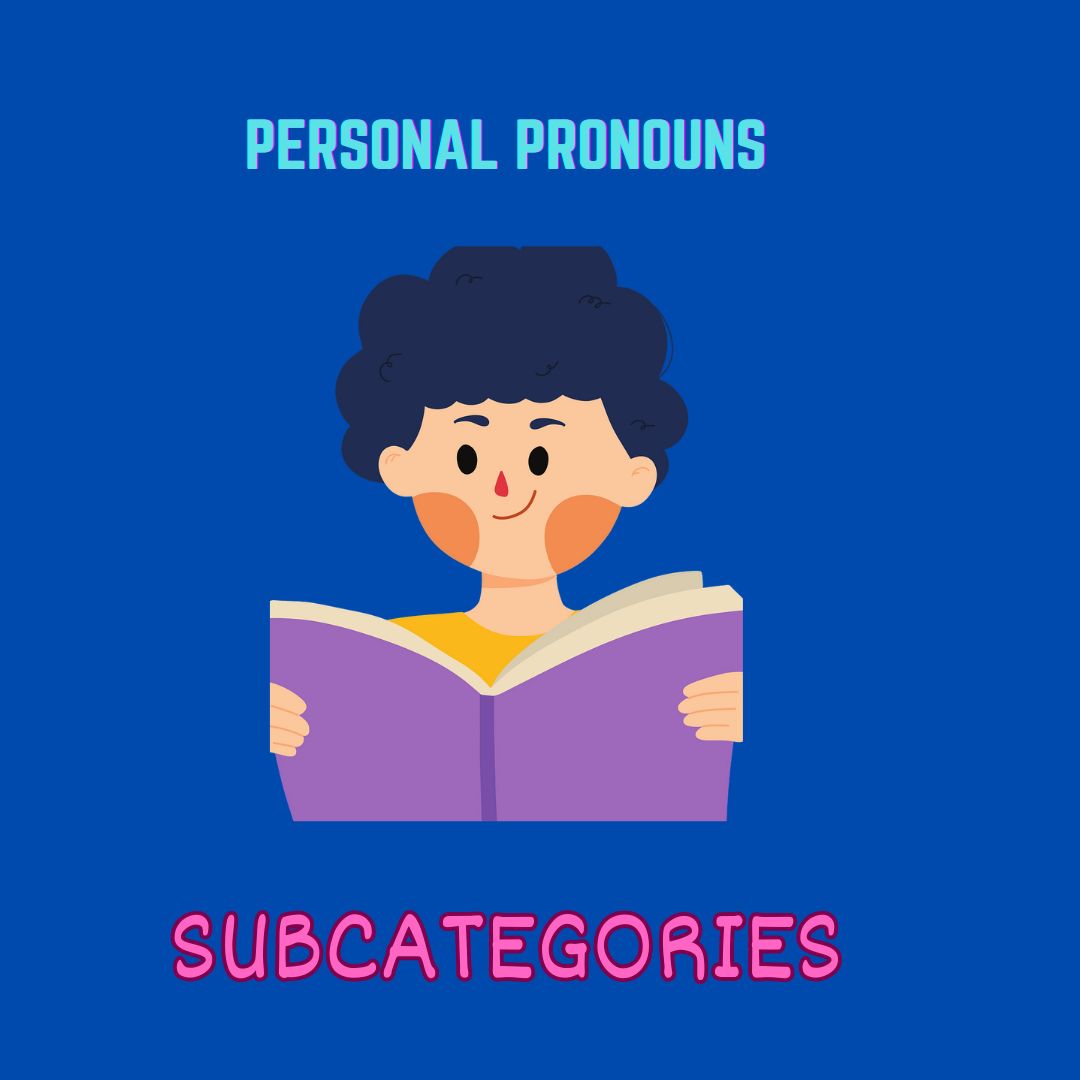Personal Pronouns and their subcategories

About Personal pronouns
Personal pronouns: These pronouns refer to specific people or things, and they change based on their role in the sentence.
Subcategories of Personal Pronouns:
Personal pronouns can be further classified into three subcategories:
Subjective pronouns (I, you, he, she, it, we, they)
Objective pronouns (me, you, him, her, it, us, them)
Possessive pronouns (mine, yours, his, hers, its, ours, theirs)
Personal pronouns are used to refer to people or things, and they change depending on their role in the sentence.
Some examples of personal pronouns in different grammatical contexts:
He, she, and it are all third-person singular pronouns used to refer to people, animals, or things.
He is used to refer to male individuals; she is used to refer to female individuals; and it is used to refer to non-living things, animals, or objects.
These pronouns are used in a variety of contexts, such as in sentences where the subject or object is singular and in the third person.
For example,
He is a doctor.
She loves to play the piano.
It is a beautiful day outside.
It’s important to note that he and she are gendered pronouns and should only be used to refer to people whose gender is known. If you don’t know someone’s gender, it’s appropriate to use gender-neutral pronouns like they or them instead.
Subjective pronouns:
These pronouns are used as the subject of the sentence. They are in the nominative case and indicate who or what is taking the action.
Example:
She is going to the store.
In this sentence, she is the subjective pronoun and is the subject of the sentence. It indicates who is taking the action of going to the store.
Objective pronouns:
These pronouns are used as the object of the sentence. They are in the accusative case and indicate who or what is receiving the action.
Example:
He gave me the book.
In this sentence, me is the objective pronoun and is the object of the verb gave. It indicates who received the action of the verb.
Possessive pronouns:
These pronouns are used to show ownership or possession of something.
Example:
That is her book.
In this sentence, her is the possessive pronoun, which shows that the book belongs to the person referred to as her.
The form of personal pronouns changes depending on the case, gender, and number.
For example, the third-person singular subjective pronoun he is different from the third-person singular objective pronoun him.
In English, there are two forms of possessive pronouns: dependent and absolute.
The dependent possessive pronouns:
are used before a noun to show possession or relationship, and they are always followed by a noun.
The dependent possessive pronouns are: my, your, his, her, its, our, and their.
Some examples of dependent possessive pronouns in use are:
My dog is named Max.
Your car is really fast.
His house is located on Main Street.
Her favorite color is green.
Its leaves are turning brown.
Our team won the championship.
Their parents are coming to visit.
The absolute possessive pronouns:
are used to show possession or relationship without being followed by a noun.
The absolute possessive pronouns are :mine, yours, his, hers, its, ours, and theirs.
Some examples of absolute possessive pronouns in use are:
The red car is mine.
Is that pen yours?
That book is hers.
The trophy is ours.
The team played really well, and the victory is theirs.
Click here to learn more about Personal Pronouns and their subcategories
Click here to learn more about The Types of the English Pronouns
Click here to learn more about What is a Pronoun? The Functions of the English pronouns.